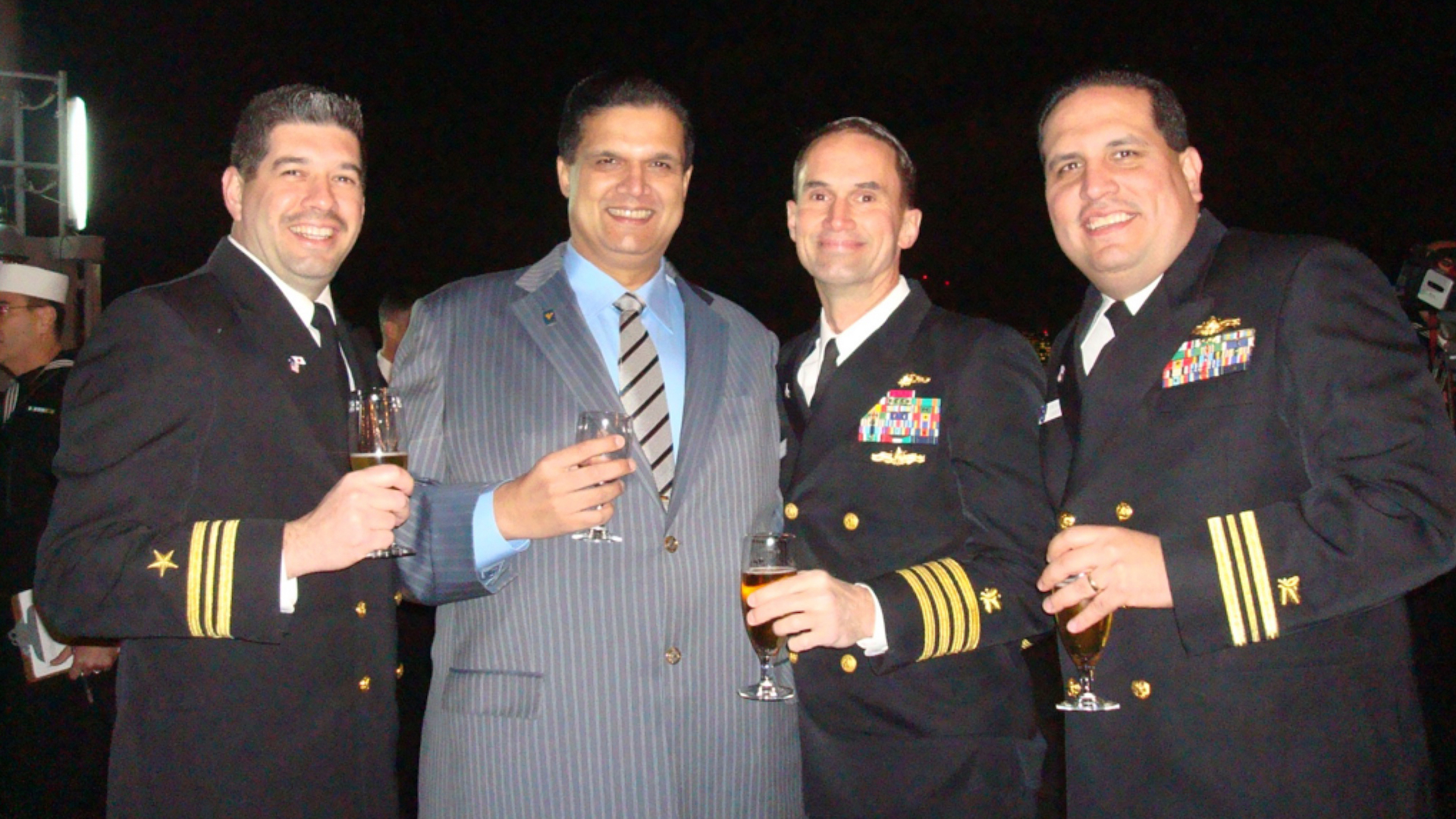
America’s Transition to
A Banana Republic Is Now Complete
John Schindler / The Washington Examiner
(September 8, 2022) — Remember Fat Leonard? Who can forget that handle?
OK, maybe some folks. After all, he was last in the limelight in early 2015, and the media never paid sufficient attention to his sensational case.
This scandal should have gotten its own movie, or at least a Netflix series. It has everything: selling secrets, exotic ports of call, corrupt officials, and lots of partying and sex amid unsubtle hints of espionage. Yet Hollywood lives in an alternate reality where admirals are incorruptible patriots and the Naval Criminal Investigative Service is a competent organization.
Leonard Glenn Francis, a Malaysian wheeler-dealer who got his moniker for his impressive girth, delivered the Navy the worst corruption scandal in its long history. His Singapore -based firm, Glenn Defense Marine Asia, got rich off supplying the Navy’s Pacific Fleet with repair and support services. This is a tenebrous line of work, but Fat Leonard took it to new levels starting in 2004 by recruiting Navy personnel, including high-ranking officers, to steer business his way.
Aided by corrupt American sailors who were happy to sell the Malaysian conman secrets, particularly about ship deployments in the Western Pacific, Fat Leonard found his niche. In return, the sailors got cash, booze, gifts, sex with prostitutes, and anything they wanted. Honest sailors filed complaints, but the brass looked the other way since Fat Leonard got the job done. “He was a crook, but he was our crook,” explained one of the officers caught up in the scandal.
By 2009, concerns reached NCIS, which put one of its top investigators on the case. John Beliveau had recently been named NCIS Agent of the Year. But Fat Leonard promptly recruited Beliveau into his criminal enterprise, including payment with Lady Gaga tickets, thus making NCIS work for him, not the other way around.
That bought Fat Leonard time, but everything came crashing down in late 2013. No longer could Navy leadership look the other way as the scam took in hundreds of millions of Pentagon dollars (Fat Leonard’s company delivered $200 million in services to the Navy in 2011 alone). Fat Leonard agreed to a plea deal in January 2015 with the Department of Justice, admitting to conspiracy to commit bribery, bribery, and conspiracy to defraud the United States, facing up to 25 years in prison in exchange for implicating three dozen Navy officials in his scheme.

The Navy’s Biggest Scandal
The scandal tore the Navy asunder, wrecking hundreds of careers. Almost a dozen senior officers received prison sentences (NCIS Agent Beliveau got 12 years), while a stunning 60 admirals fell under suspicion. One admiral went to prison while eight others were censured or reprimanded, making this by far the biggest scandal in Navy history.
It was suspicious that two of Fat Leonard’s best admiral buddies were top intelligence officers. One of them, Vice Adm. Ted Branch, was the director of naval intelligence. Although Branch was cleared of wrongdoing after an extended investigation, he was sent into retirement because he was not allowed to see classified information. The whiff of China lingered over the whole affair, given Fat Leonard’s connections and the thick presence of Chinese spies in the ports where Glenn Defense Marine Asia plied its shady trade.
Unfortunately, that was something neither the Navy nor the media sought to dwell on.

Media Missing in Action;
Fat Leonard Missing for Real
While the media didn’t exactly ignore the Fat Leonard scandal, they gave it much less attention than the case merited. Perhaps it was all too much since the sordid saga revealed that the Navy was corrupted up to the highest levels. Everybody seemed to want the case to go away when Fat Leonard copped his plea.
As I reported at the time: “Yesterday, one of the more remarkable scandals in the history of the US Navy more or less wrapped up.” That was the end of it.
Or so it seemed. Somehow, seven years and eight months later, Fat Leonard still has not been sentenced in court. And now, he may never see that sentencing before a judge since he’s disappeared. You read that right.
Fat Leonard wasn’t in pretrial detention. In 2018, he worked out a deal with the court in which he lived in a San Diego home for medical reasons, including renal cancer, with private security provided by Fat Leonard, in addition to an ankle monitor so the US Marshals would know his whereabouts. He was living in a gated community in upscale Carmel Valley with his mother and his children. Fat Leonard was scheduled to appear in federal court, at last, on Sept. 22, to receive his sentence.
However, at 7:30 Sunday morning, his ankle monitor pinged the Marshals that it was being tampered with, and by the time the authorities reached the house, in the middle of the afternoon, nobody was there. Police found no sign of Fat Leonard and whoever was living there with him. He apparently cut off his ankle monitor and went on the lam.

A Smooth Escape
Since a 58-year-old cancer patient weighing 350 pounds who can barely walk cannot be said to have “run away,” what on earth happened? Worse, neighbors reported that multiple U-Hauls were spotted at the house in the days before Fat Leonard’s disappearance.
This was a very slow-motion getaway. The authorities have yet to find any trace of their plus-sized quarry. Since the house is only a 40-minute drive from the Mexican border, the smart money is on Fat Leonard having fled the US.
He’s presumably now back in Asia or will be soon. Barring the officers getting a lucky break, the Malaysian mystery man may have made his final escape.
Embarrassed by such a debacle, the Marshals Service and the FBI are dodging media questions right now. Fear not, however, the Navy has put NCIS on the case, too!
John R. Schindler served with the National Security Agency as a senior intelligence analyst and counterintelligence officer.
Posted in accordance with Title 17, Section 107, US Code, for noncommercial, educational purposes.